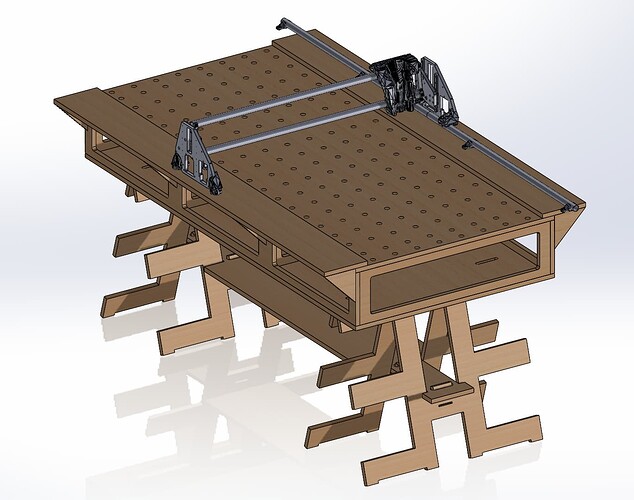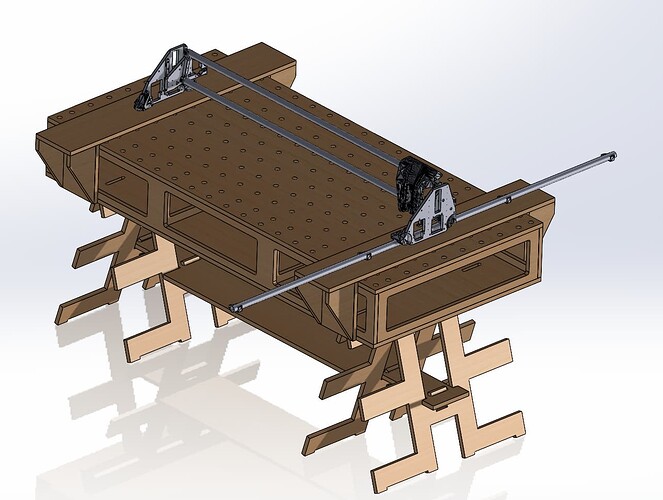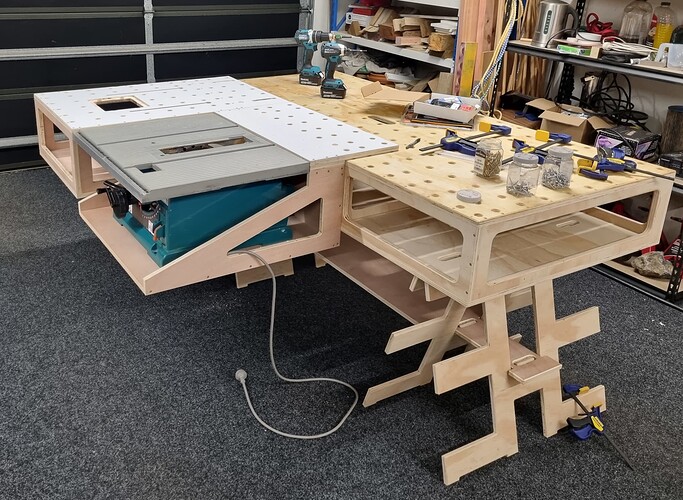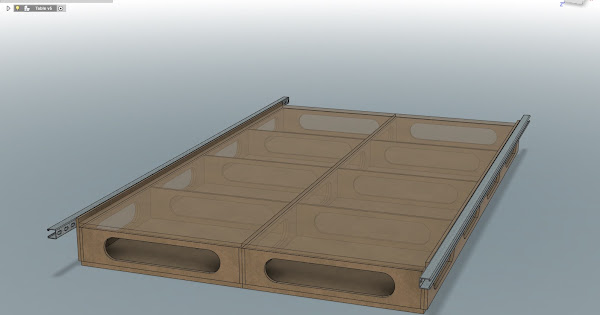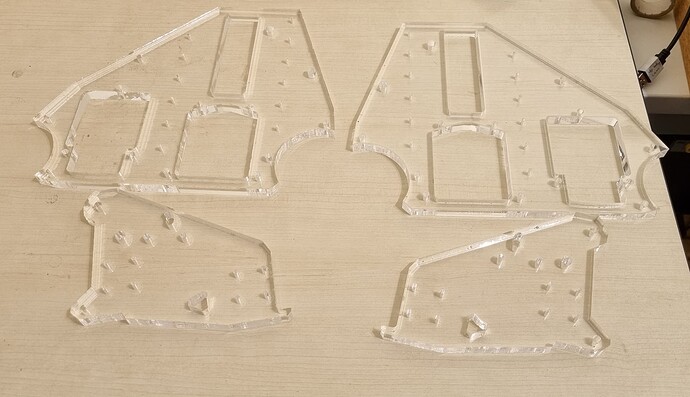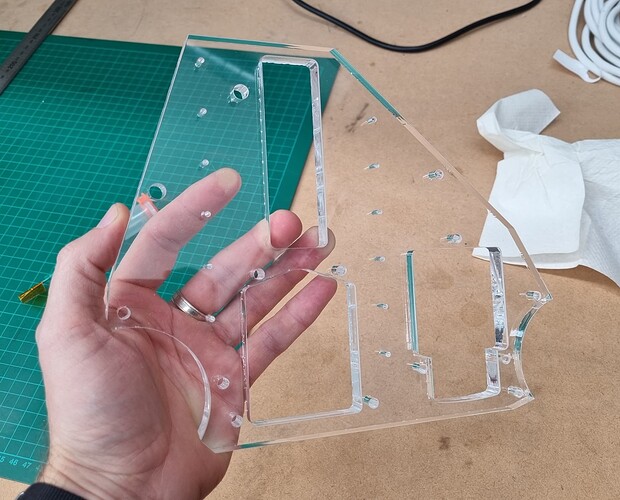Hi all, I’m considering building an LR3 and I’m looking for some opinions on table options. I already have a Paulk Smart Bench that I’ve been using for a couple of years and have made all sorts of attachments for it (table saw, router table, slab flattening sled, cutting jigs etc.), so the idea would be to re-use this bench in some fashion as I already have space to use it and a way to store it when it’s not needed.
The main idea that I’d like some feedback on is to build a set of add-on rails for the bench that an LR3 could run on. The assembly process would be to set up the bench, attach the rails and a spoil board, check for squareness, drop the LR3 on the rails, string and tension the belts and then be good to go. When not in use, the LR3 and rails can hang on a wall or stored in a cupboard somewhere, potentially.
Assuming that there isn’t anything preventing that idea from working, the next consideration is which orientation to build the system in. The bench itself is 864mm x 1824mm which is roughly 34" x 72". I have the array of holes drilled in the top quite accurately so I’m confident that these could be used to mount the rails with decent repeatability.
I could add rails that hang off the long sides of the table like this:
This would give me a working area of ~750mm x ~1500mm and seems like the most obvious approach, at the expense of a potentially slightly odd sized work area.
Alternatively, I could add rails that ‘straddle’ the bench across the short dimension like this:
This would give me a working area that’s ~1240mm wide by 864mm or longer if I want to extend the rails further and add extra support for the work. This seems like a slightly more oddball approach that doesn’t fit the shape of the workbench well but would leave me with a gantry that could be used for full-sheet cuts. It could also be used to cut parts into a segment of a full sheet with the excess being supported by some saw horses, potentially.
A 3rd option would be to add the LR3 directly to the top (or bottom side) of the bench but that seems like it’d end up with an even narrower gantry and workspace, which seems like a waste of potential capability.
I don’t have any clear projects in mind for the moment so I don’t really have any ‘must hit’ dimensions or capabilities. The option to make a full-width gantry is appealing from the perspective of coming down with ‘full size sheet fever’.
So I guess the main questions are whether anyone sees any issues or constraints with the ideas above and, if not, is there a preferred orientation? Are there any obvious pitfalls to intending the CNC to be easily disassembled? Are there any key tweaks or remixed parts that make living with a frequently disassembled LR3 easier?
